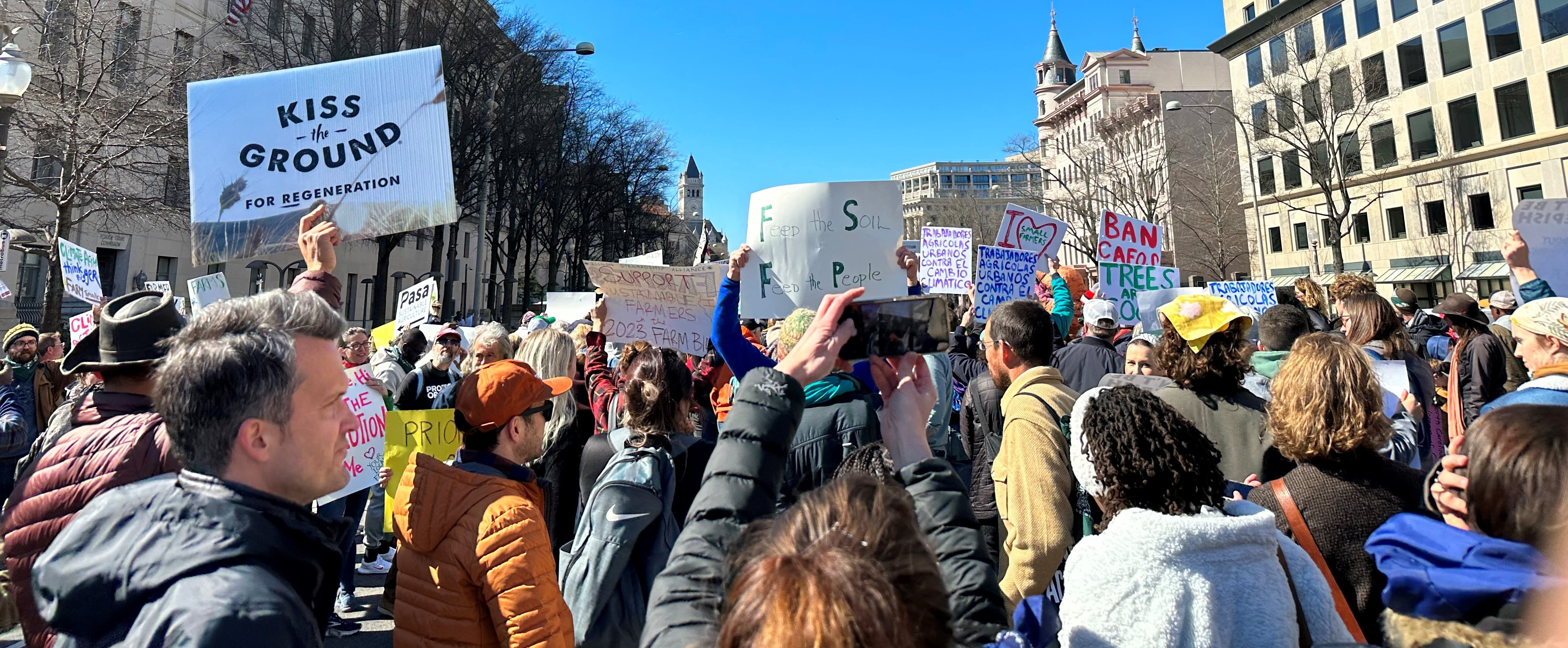Codi Coulter is a law student at Maryland Carey School of Law and guest contributor on this blog.
A thriving local food system can improve the economy, the environment, and health, benefitting both consumers and producers. Local food is often sold directly to consumers, and an increased demand for local foods can stimulate jobs throughout the food system. In addition, local food is often fresher and more nutritious. Local food also benefits the environment because it does not have to be transported as far and encourages sustainable agriculture practices. In the 2023 Farm Bill, Congress should increase existing funding mechanisms to expand access to local foods across the United States.
The United States’ food system—important to the economy, environment, and public health—is vast and complex. Various government agencies administer food and agricultural laws and regulations, leading to confusion and inefficiency in the national system. Further, government support programs favor large agricultural commodity producers, lacking sufficient incentives for small fruit and vegetable growers, despite growing concerns regarding health, the environment, and food insecurity. As detailed in the Farm Bill Law Enterprise’s (“FBLE”) Farm Viability Report, strategic local food systems can help address these issues by bringing together stakeholders to shape food policies. While 29 states and two regions currently have either an active food plan or one in development, increased national funding would both strengthen the existing food plans, as well as encourage development of more food plans throughout the country.
The United States Department of Agriculture Agricultural Marketing Service administers the Regional Food System Partnerships Program (“RFSP”) under the Local Agriculture Market Program. Created in the 2018 Farm Bill, RSFP provides grant funding to develop local or regional food system plans. The funding can be used for either planning and design or implementation and expansion projects and is intended to support projects in their early stages. Because the RSFP application process is competitive, not all applicants will receive funding; in FY2020, only around 20 percent of applicants received funding. Currently, partnerships between an “eligible entity” and an “eligible partner” are eligible to apply for RSFP funding. “Eligible entities” include things like cooperatives, producer associations, Community Supported Agriculture networks, food councils, local governments, and economic development corporations. “Eligible partners” include state agencies, philanthropic or private corporations, higher education institutions, and commercial, federal, or Farm Credit System lending institutions. This distinction in entity types may curtail the role and leadership that states can offer in food system planning. In the 2023 Farm Bill, Congress should improve the RSFP to strengthen local food systems, leading to stronger local economies and healthier communities. Congress should increase RSFP funding so that more partnerships may receive grants to create local food system plans.
Over the past several decades, food policy councils (“FPC”) have been organized in states and localities to address challenges in the food system, with a goal to improve food access in their communities and support local farmers. According to the Johns Hopkins University Center for a Livable Future (“CLF”), which maintains a directory of FPCs across North America, an FPC is a group of stakeholders that may be organized by a government body and that works to address food systems issues at the local, state, regional, or tribal level. FPCs have successfully affected local food policies across the nation to introduce farm-to-school programs, launch hunger relief pantries stocked with only local products, obtain transportation vouchers for people facing food access barriers, and more. With more than 300 FPCs in CLF’s database, these groups can serve as a starting point for state governments to develop partnerships to develop effective state-level food system plans. In addition, Congress should clarify the eligibility requirements to encourage state government partnerships with FPCs and similar groups.
For more on FBLE’s recommendations regarding state food system plans and related issues, see the Farm Viability Report.
The views and opinions expressed on the FBLE Blog are those of the authors and do not necessarily reflect the official policy or position of FBLE. While we review posts for accuracy, we cannot guarantee the reliability and completeness of any legal analysis presented; posts on this Blog do not constitute legal advice. If you discover an error, please reach out to contact@farmbilllaw.org.


